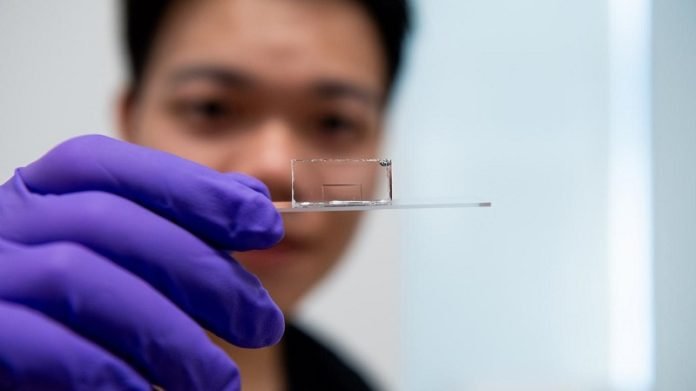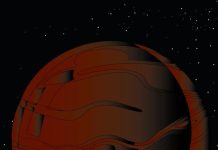
Scientists at the University of Chicago found a glass crystal just a few atoms thick can trap and carry light—and could be used for applications.
Our world works by directing light from one place to another.
Think of big underwater cables carrying internet data, including the videos you watch or the online shopping you do. These cables use light to send information. Now, imagine that same technology but even smaller and better!
Professor Jiwoong Park from the University of Chicago had a cool idea. What if the strands carrying this light were made super thin, so flat that they’re almost 2D? What would the light do?
He and his team tested this out. They created a sheet of glass crystal so thin it’s just a few atoms thick. They found out this thin sheet can hold and move light very efficiently. And, the light can travel pretty far, at least for computer standards—up to a centimeter!
Their discovery was published in the journal Science. It talks about creating very thin light circuits, which might help develop new tech gadgets in the future.
“We couldn’t believe how good this thin crystal was,” said Professor Park. “It can hold onto light energy and also move it really far. The light behaved like it’s moving in a flat, 2D space.”
So, what’s special about this?
Well, the team’s invention helps guide light in a new way. When they tested, they used tiny tools like prisms and lenses to direct where the light should go. This is a bit like building tiny roads or paths for light.
And, all these tiny tools can help make computer circuits.
Usually, in technology we have now, light particles (called photons) move inside something like a tunnel. But, with Professor Park’s discovery, because the glass crystal is super thin, the light particle is too big for it. This means part of the light sticks out as it moves.
It’s like the difference between sending suitcases in a tube around an airport, versus just placing them on a moving belt. On a moving belt, you can see and touch the suitcases while they move. This new way lets scientists easily work with the light, using tools to change its direction.
Also, the light can pick up information as it moves. It’s like checking suitcases from outside to see if it’s raining. The light can show what’s happening around it. For example, if the light travels through a liquid, it can tell if there’s something special in that liquid.
The team is excited because they can create even tinier circuits. They can pile them up, fitting more stuff into a small space. For these experiments, they used a special glass called molybdenum disulfide, but they think other materials will also work.
While some scientists thought this idea might be possible, proving it wasn’t easy. It took years!
“It was hard but fun,” said Hanyu Hong, a student and part of the research team. “We were trying something totally new. We had to make everything ourselves—from making the material to checking how the light moved.”
This discovery might be a big step for the future of tech, making things smaller, faster, and better!
The study was published in Science.
Follow us on Twitter for more articles about this topic.
Source: University of Chicago.



